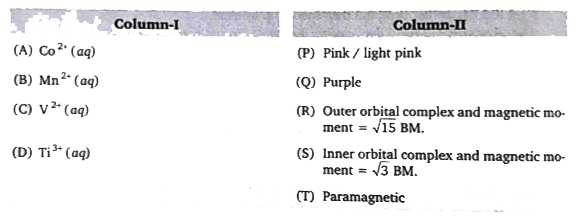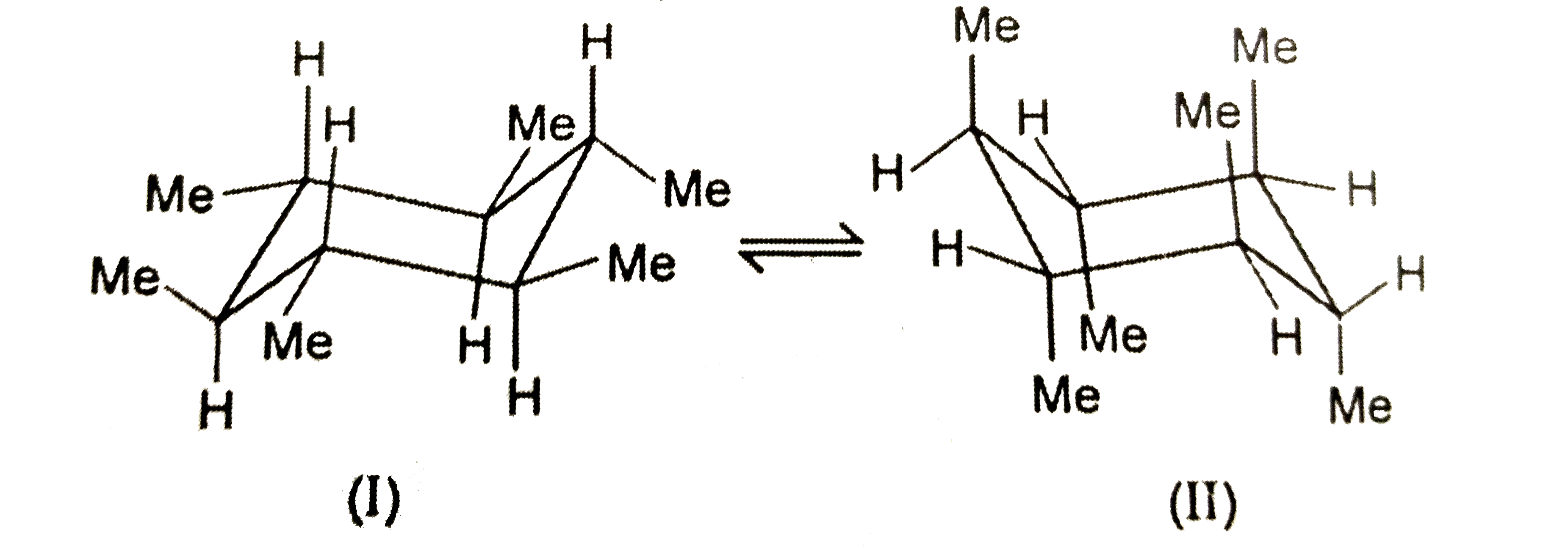A crystal may have one or more planes and one or more axes of symmetry but it has:
Two centres of symmetry
Only one centre of symmetry
No centre of symmetry
Three centres of symmetry
The correct Answer is:B
To solve the question, we need to understand the concepts of symmetry in crystal structures. Let's break it down step by step:
Step 1: Understanding Crystal Symmetry
A crystal can exhibit various types of symmetry, including planes of symmetry and axes of symmetry.
Hint: Remember that symmetry in crystals relates to how the structure can be divided or rotated to yield identical halves or parts.
Step 2: Identifying Planes of Symmetry
A plane of symmetry is an imaginary plane that divides the crystal into two mirror-image halves. A crystal can have multiple planes of symmetry.
Hint: Think of a mirror; if you can draw a line through the crystal where both sides look identical, that's a plane of symmetry.
Step 3: Identifying Axes of Symmetry
An axis of symmetry is an imaginary line around which the crystal can be rotated, and the structure appears unchanged. A crystal can also have multiple axes of symmetry.
Hint: Visualize spinning a toy around a stick; if it looks the same after a certain degree of rotation, that stick represents an axis of symmetry.
Step 4: Understanding Center of Symmetry
The center of symmetry (or inversion center) is a specific point in a crystal structure where for every point in the crystal, there is an identical point at an equal distance on the opposite side of this center.
Hint: Imagine a point in the middle of a crystal; if you can find a corresponding point directly opposite it at the same distance, that point is the center of symmetry.
Step 5: Conclusion on Center of Symmetry
Unlike planes and axes of symmetry, a crystal can only have one center of symmetry. This is because the center is defined as a unique point that reflects all other points in the structure.
Hint: Recall that having multiple centers would contradict the definition, as each center would need to be equidistant from all corresponding points.
Final Answer
A crystal may have one or more planes and one or more axes of symmetry, but it has only one center of symmetry.
A crystal can exhibit various types of symmetry, including planes of symmetry and axes of symmetry.
A plane of symmetry is an imaginary plane that divides the crystal into two mirror-image halves. A crystal can have multiple planes of symmetry.
An axis of symmetry is an imaginary line around which the crystal can be rotated, and the structure appears unchanged. A crystal can also have multiple axes of symmetry.
The center of symmetry (or inversion center) is a specific point in a crystal structure where for every point in the crystal, there is an identical point at an equal distance on the opposite side of this center.
Unlike planes and axes of symmetry, a crystal can only have one center of symmetry. This is because the center is defined as a unique point that reflects all other points in the structure.
A crystal may have one or more planes and one or more axes of symmetry, but it has only one center of symmetry.
Topper's Solved these Questions
- THE SOLID STATE BOOK - AAKASH INSTITUTE ENGLISHCHAPTER - THE SOLID STATE EXERCISE - Assignment (SECTION - B) (OBJECTIVE TYPE QUESTION)
25 Videos
- THE SOLID STATE BOOK - AAKASH INSTITUTE ENGLISHCHAPTER - THE SOLID STATE EXERCISE - Assignment (SECTION - C) (PREVIOUS YEARS QUESTION)
41 Videos
- THE SOLID STATE BOOK - AAKASH INSTITUTE ENGLISHCHAPTER - THE SOLID STATE EXERCISE - EXERCISE
30 Videos
- THE S-BLOCK ELEMENTSBOOK - AAKASH INSTITUTE ENGLISHCHAPTER - THE S-BLOCK ELEMENTSEXERCISE - Assignment (Section-J)
10 Videos
- THERMODYNAMICSBOOK - AAKASH INSTITUTE ENGLISHCHAPTER - THERMODYNAMICSEXERCISE - ASSIGNMENT (Section -D) Assertion-Reason Type Questions
15 Videos
Similar Questions
Knowledge Check
Which of the following figures has only one line of symmetry ?
AA rectangleBA parallelogramCAn isosceles trapeziumDA circle
Which letters of the English alphabet have :
one horizontal and one vertical line of symmetry
View SolutionThe differential equation of all parabolas having their axes of symmetry coincident with the axes of x, is
View SolutionA : All crystals of same substance possess the same elements of symmetry.
R : The size of crystal of same substance may vary depending upon the conditions of crystallisation.
View SolutionVernier constant is the (One or more than one correct option may be correct )
View SolutionWhich one has more free energy
View SolutionEntries of Column-I are to be matched with entries of Coloumn-II. Each entry of Column-I may have the matching with one or more than one entries of Column-II.

View SolutionEntries of Column-I are to be matched with entries of Coloumn-II. Each entry of Column-I may have the matching with one or more than one entries of Column-II.

View Solution
